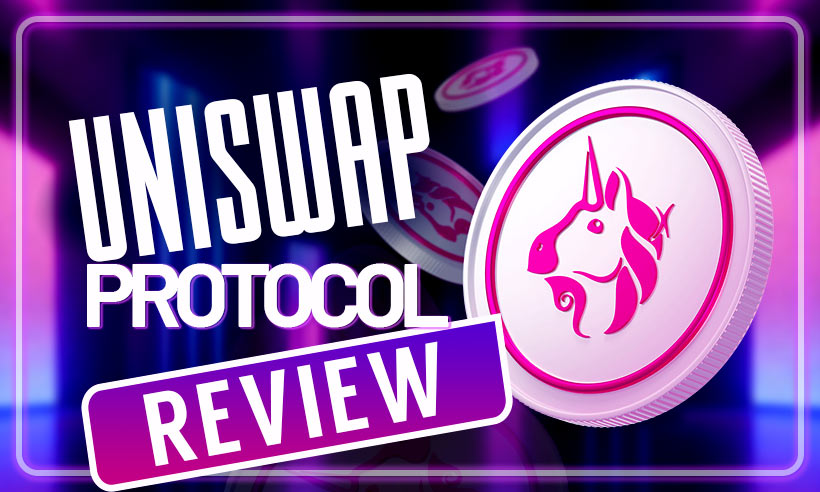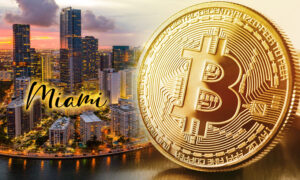
The majority of people in crypto are mostly interested in buying or selling cryptocurrencies. Centralized exchanges enable these services with very low fees but firstly users have to do KYC to use their services. Assets owned by users are not in their custody and they have no control over it, exchanges have custody over their assets, and in the event of a hack of exchange, users’ assets can be stolen by hackers. In the initial years of crypto, users had to rely on these centralized exchanges only, but now users have another option that is decentralized exchanges. Decentralized exchanges such as Uniswap provide solutions to all of these problems faced by users. Users of Uniswap have full custody of their assets and anybody from anywhere in the world can use the exchange without doing any KYC. What is Uniswap? Uniswap is a peer-to-peer decentralized crypto exchange, where users can buy or sell cryptocurrencies. The protocol is developed in a way such that its smart contracts can’t be changed by any developer, it is censorship-resistant, and users get custody of their own assets and it works without any trusted intermediaries. Generally in public markets, exchanges use a central limit order book, where buyers and sellers set their orders on certain price levels that are filled as demand and supply shifts. Uniswap does not follow this order book approach, it uses an Automated Market Maker (AMM) also known as Constant Function Market Maker. Users can easily swap between ERC-20 tokens. Anyone can list their token on Uniswap, as long as there is a liquidity pool available for traders. There are no listing fees that need to be paid. How does Uniswap Work? Users put their tokens in liquidity pools, these pools facilitate trading by providing liquidity on decentralized exchanges. Each liquidity pool has a pair of tokens and each pool creates its own market. A good example of such a liquidity pool is ETH/USDC. Users can trade ETH in exchange for USDC or vice-versa. Users who deposit their tokens and create liquidity are rewarded with LP tokens, which are of an equivalent value of the token pair deposited by them. 0.3 percent of the fee is distributed among the LP token holders, whenever a trade is assisted by their liquidity pool. Liquidity providers can withdraw their liquidity by withdrawing their LP tokens at any time. The price of a token gets changed with every swap facilitated by the liquidity pool. This mechanism is called Automated Market Maker. How does Automated Market Maker Works? Let’s consider an example of the ETH/USDC liquidity pool, We will call the ETH portion of the pool x and the USDC portion y. Uniswap multiplies these two quantities and calculates the total liquidity in the pool. Let’s call total liquidity in the pool k. Automated market maker main goal is that k remains constant meaning total liquidity in the pool is always constant. The formula for total liquidity in the pool will be called x*y=k. Let’s say John buys 1 ETH for 2000 USDC from ETH/USDC liquidity pool. After this trade, the USDC portion increases in the pool, and the ETH portion gets decreased in the pool. This transaction makes the ETH price go up because there is now less ETH in the pool and total liquidity(k) must remain constant always. This mechanism is used for determining the price of tokens. Tokenomics Uniswap has its own ERC-20 token called UNI. It is a governance token. UNI holders can participate in governance functions which gives them rights to propose their own policy and can also vote on governance proposals. UNI holders decide the distribution of rewards from the Uniswap treasury and protocol fees change. Uniswap raised an undisclosed amount of funding from the paradigm in their first seed round. In total Uniswap has raised a total of $11M in funding over 5 rounds. The above diagram shows the Initial Token Distribution of UNI tokens UNI tokens started having a 2% inflation rate after their Initial token distribution, this release of tokens ensures contribution to Uniswap. Uniswap has made a self-sustainable infrastructure while being publicly owned. The total supply of UNI tokens is 1 billion. As of writing this article, the circulating supply of UNI tokens is 452 million tokens, the market cap is 6.3 billion US dollars, and the price is 14.1 US dollars. Conclusion Unlike centralized exchanges which take the full share of fees generated by trading cryptocurrencies, Uniswap distributes fees earned by protocol to the liquidity providers. Thus community gets all the benefits. Community of UNI holders have full control over the future decisions of the Uniswap protocol. Being a decentralized protocol gives Uniswap a huge advantage because decisions can be taken at a fast pace and innovative ideas get in the spotlight and get implemented quickly. … Continued
The post Uniswap Protocol Review: Leading Decentralized Exchange appeared first on Cryptoknowmics-Crypto News and Media Platform.
Source: https://www.cryptoknowmics.com/news/uniswap-protocol-review-leading-decentralized-exchange/
- "
- ADvantage
- All
- among
- article
- Assets
- Automated
- Automated Market Maker
- being
- benefits
- Billion
- buy
- Buying
- call
- change
- community
- contracts
- crypto
- crypto exchange
- cryptocurrencies
- Custody
- decentralized
- Decentralized Exchange
- Demand
- determining
- developed
- Developer
- Display
- distributed
- dollars
- easily
- ERC-20
- ETH
- eth price
- Event
- example
- exchange
- Exchanges
- faced
- FAST
- Fees
- First
- follow
- full
- function
- funding
- future
- good
- governance
- hack
- hackers
- having
- holders
- How
- HTTPS
- huge
- inflation
- Infrastructure
- IT
- KYC
- leading
- Liquidity
- liquidity providers
- List
- listing
- Long
- LP
- Majority
- maker
- Market
- Market Cap
- Markets
- Media
- million
- news
- Option
- order
- orders
- paradigm
- participate
- People
- policy
- pool
- Pools
- price
- propose
- protocol
- provide
- public
- review
- Rewards
- round
- rounds
- seed
- sell
- Sellers
- Services
- set
- Share
- smart
- Smart Contracts
- Solutions
- Spotlight
- started
- stolen
- supply
- the world
- time
- token
- tokenomics
- Tokens
- trade
- Traders
- Trading
- Trading cryptocurrencies
- transaction
- Uniswap
- us
- USDC
- users
- value
- Vote
- What
- What is
- WHO
- without
- Work
- works
- world
- writing
- X
- years











